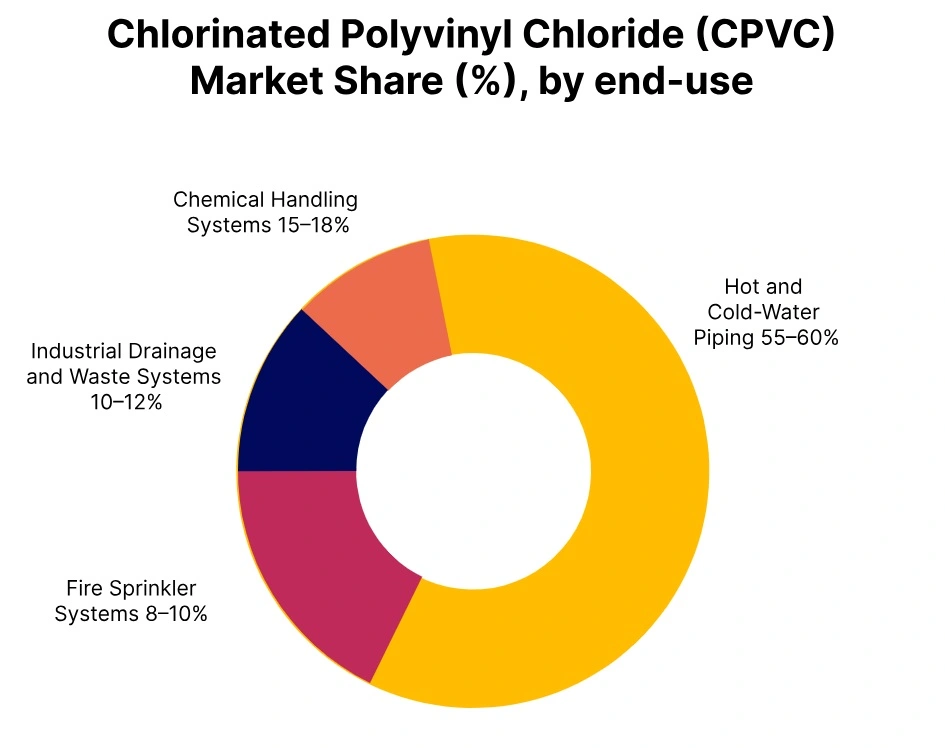Price-Watch’s most active coverage of Chlorinated Polyvinyl Chloride (CPVC) price assessment:
- Pipe grade (Chlorine content 66.8-67.8%) FOB Shanghai, China
- Pipe grade (Chlorine content 66.8-67.8%) CIF Nhava Sheva (China), India
- Pipe grade (Chlorine content 67%) FOB Tokyo, Japan
Chlorinated Polyvinyl Chloride (CPVC) Price Trend Q3 2025
In Q3 2025, the global CPVC resin market displayed moderate stability with regional variations. The Chlorinated Polyvinyl Chloride (CPVC) price trend fluctuated by 1-7% during the July-September 2025 quarter, influenced by steady feedstock costs, energy prices, and regional supply chain dynamics.
Despite some upstream fluctuations, robust demand from construction and plumbing industries helped sustain price stability. Continued production capacity expansions and supply chain adjustments are expected to support stable prices in the upcoming quarter.
Thailand
Chlorinated Polyvinyl Chloride (CPVC) Export price FOB Laem Chabang, Thailand, Grade: Pipe grade (Chlorine content 66.8-67.8 %).
In Q3 2025, Chlorinated Polyvinyl Chloride (CPVC) price trend in Thailand declined by approximately 6.27% on an FOB basis. The Chlorinated Polyvinyl Chloride (CPVC) price trend in Thailand has been influenced by fluctuations in upstream raw material costs and adjustments in regional supply chains. Despite the price drop, steady demand from key sectors, particularly construction and plumbing, helped maintain market stability. The reduction in pricing can be attributed to softer demand in certain regions and some logistical adjustments.
Looking ahead, the Chlorinated Polyvinyl Chloride (CPVC) market in Thailand is expected to maintain a relatively stable price outlook, with price movements likely to be influenced by ongoing supply chain dynamics and the broader economic environment. In September 2025, the CPVC prices in Thailand dropped by 0.87%, indicating a mild correction in the market, likely due to the continued impact of the broader supply chain adjustments and weaker demand in certain application sectors.
India
Chlorinated Polyvinyl Chloride (CPVC) import price in India from Thailand, Grade: Pipe grade (Chlorine content 66.8-67.8 %).
According to Price-Watch, In the third quarter of 2025, the price of CPVC resin in India, sourced from Thailand, fell by around 3.63% on a CIF basis to Nhava Sheva, underpinned by reductions in supply chain bottlenecks and logistics costs. The Chlorinated Polyvinyl Chloride (CPVC) price trend in India saw a principled price decline, aided by steady demand from sectors including plumbing and construction.
The aforementioned price developments have been supported by falling freight rates and availability of shipments. Conversely, the price of CPVC resin in India sourced from Japan increased by around 3.58% on a CIF basis to Nhava Sheva. This uptick in price has been attributed to broad construction and water management sector demand, increasing logistics costs, weakening rupee exchange rate, and port disruptions.
Despite stable demand developments in both markets, certain regional supply chain disruptions and variances in exchange rates exerted differing prices. In September 2025, the Chlorinated Polyvinyl Chloride (CPVC) prices in India sourced from Thailand moved up 0.01% reflective of minimal price changes due to stable demand and supply conditions. On the contrary, CPVC sourced from Japan moved down 0.51% indicative of slight relaxations from earlier price developments and exchange rates fine-tuning at the supply chain level.
Japan
Chlorinated Polyvinyl Chloride (CPVC) Export price from Japan, Grade: Pipe grade (Chlorine content 66.8-67.8 %).
In Q3 2025, CPVC resin price in Japan increased by approximately 1.13% on an FOB basis. The Chlorinated Polyvinyl Chloride (CPVC) price trend in Japan has been influenced by a combination of factors, including stable upstream raw material costs and ongoing adjustments in regional supply chains. Despite the modest price increase, steady demand from key sectors such as construction and plumbing helped maintain market stability. The rise in prices can be attributed to stable demand in key regions and some logistical adjustments.
In September 2025, the Chlorinated Polyvinyl Chloride (CPVC) prices in Japan dropped by 1.42%, reflecting a mild correction after the earlier increase, likely driven by adjustments in supply chain conditions or softer demand in specific regions. Looking ahead, the CPVC resin market in Japan is expected to maintain a relatively stable price outlook, with price movements likely to be influenced by ongoing supply chain dynamics and broader economic conditions.



